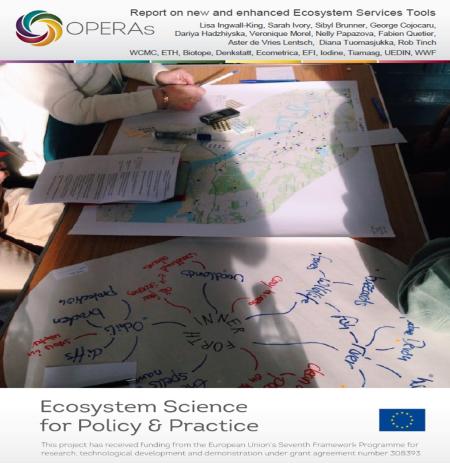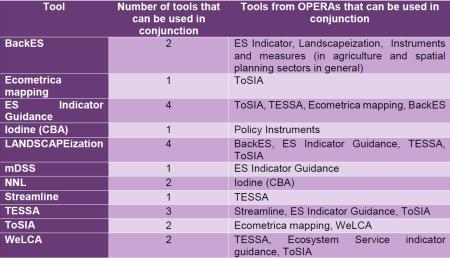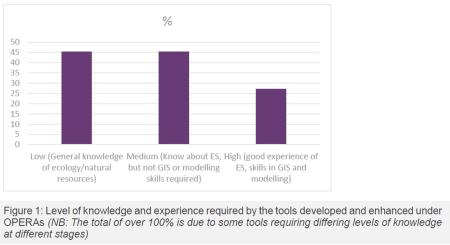
Resource description:
The primary goal of the OPERAs project is to operationalise (i.e. put into practice) ecosystem services (ES) and natural capital (NC) concepts and incorporate them into policy and decision-making. This report focuses on the development of new tools, and the enhancement of existing ones, completed as part of the OPERAs project, which aim to facilitate the uptake and use of the ES approach. By doing so, it will provide information to cover both Deliverable 4.4 and 4.6 in the OPERAs project. This deliverable builds on the OPERAs Milestone Report 4.15 (Ingwall King and Ivory, 2015), which provided an initial summary of the ES tools that have been developed and enhanced during the first three years of the project.
The report aims to answer the following four questions:
• What are the key characteristics of the tools that have been developed or enhanced?
• How can the tools be used together or independently to support the decision-making process?
• Do the newly developed or enhanced tools help to operationalise the ES/NC concepts?
• What challenges have the tool developers’ experienced, and what lessons have been learnt, during the development and testing of their tools?
The report begins with a description of the tools that have been developed or enhanced, providing information on their main use and purpose, their geographical scale, and their data and resource requirements (Section 2). The third section of the report describes how the tools are, or can be, used together through a policy implementation diagram. The fourth section describes how the tools have been tested in the different exemplars and the challenges and lessons learned.
Information presented in this report comes from compiling the data each of the tool developers have provided through reporting templates. The template for each tool can be found in Annex 1.
Author/Contact:
Lisa Ingwall-King, Sarah Ivory, WCMC
Sibyl Brunner, ETH
Images
Uses of this resource:
Under the OPERAs project (Work Package 4), eleven tools focused on measuring, assessing and monitoring ES have been developed or enhanced. Table 1 provides further information on each of the tools and their use. The purpose of these tools are multiple and variable. Most of the tools focus on engaging stakeholders (91%) and providing decision support (82%). Many of the tools include ES assessment (64%) and/or valuation (55%), whereas others focus on ES mapping (36%). Only 18% of the tools focus on implementation support. This suggests that the majority of tools help in terms of defining and understanding the issue at stake and in developing and prioritising interventions and actions, while tools that support actual implementation of identified actions are rarer.
The envisaged general use of all the tools is to provide information to support the operationalisation of the ES concept. As such, the results from most tools can be used to guide environmental management (82%), spatial planning (63%) and scenario analysis (91%). Equally, many of the tools can be used across a broad range of policy sectors, with four tools (mDSS, STREAMLINE, ES indicator guidance) applicable to all sectors (Table 2). The two policy sectors most tools can be used for are ‘agriculture and rural development’ (45%) and ‘spatial planning’ (36%). All but one of the tools support multiple policy sectors.
This report introduces and analyses them ,including their recent developments and interlinkages.
Partners:
George Cojocaru (Tiamasg), Dariya Hadzhiyska (Denkstatt), Veronique Morel (Ecometrica), Nelly Papazova (WWF), Fabien Quetier (Biotope), Aster de Vries Lentsch (UEDIN), Diana Tuomasjukka (EFI), Rob Tinch (Iodine)
Additional information:
All tools identified in this report can be found on oppla Marketplace
several; see individual tools
Licence:
- Free, no licence
Development stage:
- Full, working product
Quality assurance:
- Scientific peer review

